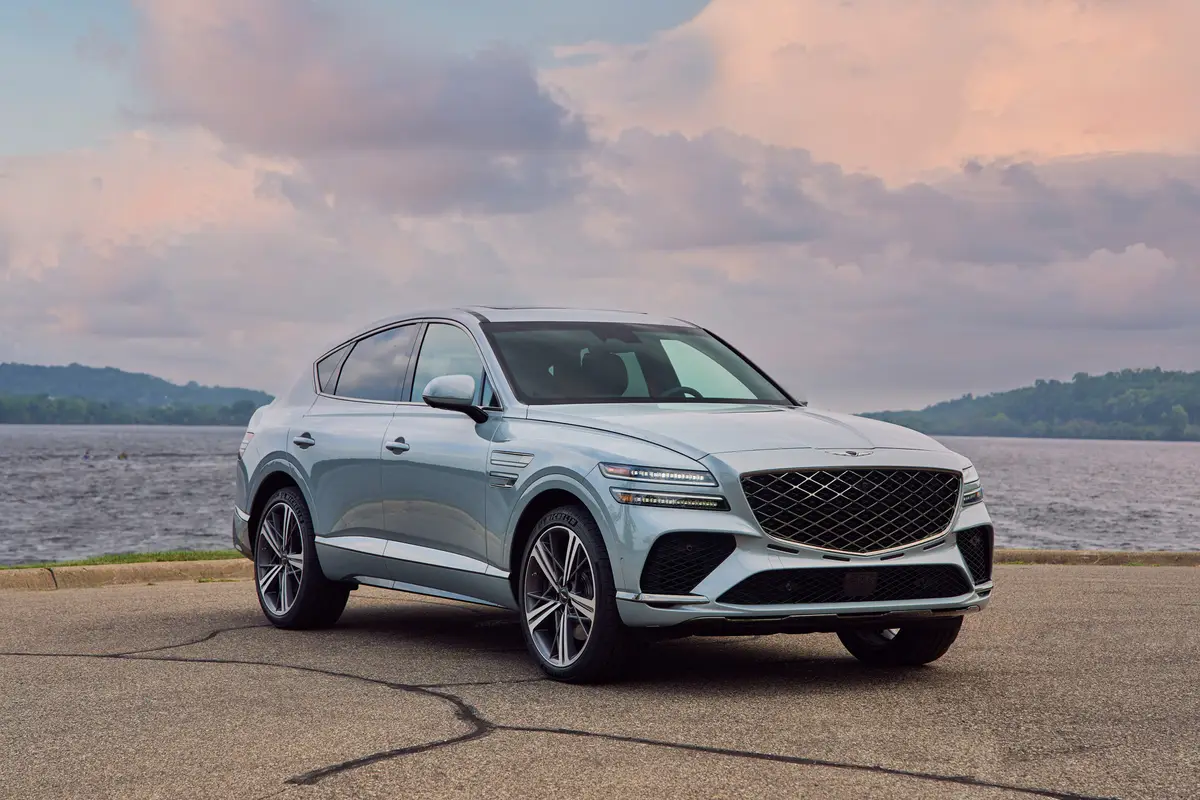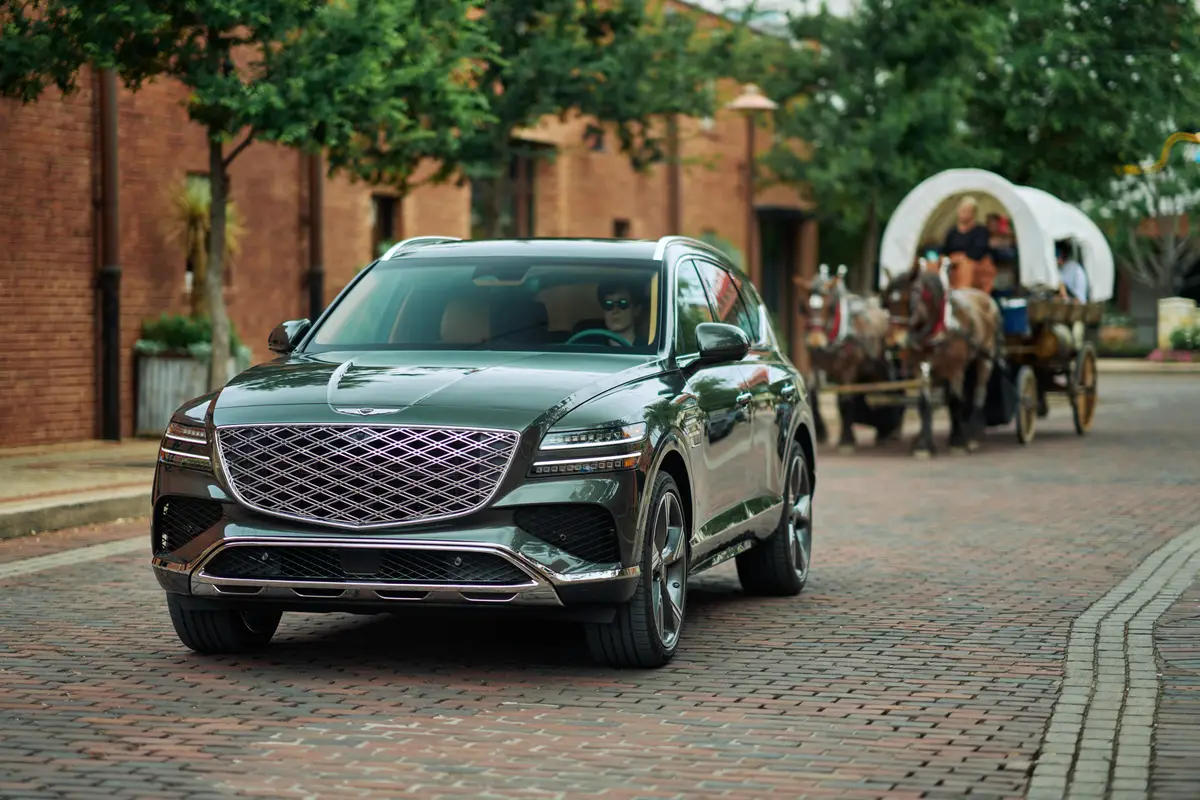Boston.com's view
See the photo of the 2010 Honda Accord Crosstour at the top of this page? The salt streaks show it has passed its winter semester in New England Highway Driving 101. Now take a moment and give that photo a second look. You’ll notice the Crosstour is a vehicle that’s different enough to draw second looks both on the highway and in parking lots.
It’s a look that some will love, but it comes with a price, and that price isn’t just the sticker, which ranges between $30,380 to $36,930, and which includes a tradeoff in decreased utility in terms of visibility and cargo space. Honda has taken a chance with the Crosstour, a new entry in the automotive world’s “create a niche” sweepstakes. In that vein, Honda calls it a “premium CUV (crossover utility vehicle)”
Honda could have revived an Accord wagon. It also could have made the Crosstour a crossover in the more squared shape of rival Toyota’s hot-selling Venza. Instead, they’ve gone in the sloped-back direction of Honda’s corporate cousin, the new Acura ZDX, a look also featured on BMW’s X6. It could have gone in a more economical direction, too, and offered a four-cylinder version as it does with the base Accord sedan. Instead, Honda has opted for power and amenities in this near-luxury vehicle.
Those who still think of the Accord as a mid-sized vehicle will realize that the relentless march to bigger-is-better have seen this Honda grow up to be a full-sized vehicle over the years.
The coupe-like slant on the back hatchback (instead of a trunk lid) is great for styling but limits bulky cargo and takes the vehicle out of buying consideration for the dog-owning populace, at least those with medium and large pets to transport. (Aside: Don’t brand Honda as anti-dog; the company offers a special dog-friendly version of its Element, another of those niche vehicles).
As for me, I love this type of car. To own one is to stand out in the stream of vehicles heading down Main Street. However, instead of dealing with a finicky car that’s often in the shop, these vehicles have a proven and reliable drive train under a different skin.
Normally, I’d be hesitant to recommend buying a built-in navigation system, but it’s almost a must with the Crosstour, even though the package runs $2,200. While it will help you find your way to a new destination in an unfamiliar city, you’ll find the backup camera even more valuable. Why? Because the other downside of the sloping hatchback design is compromised rear visibility.
Backing up is not fun, but the camera-with its built-in “guidance lines”-makes driving in reverse easier. And, if you’re like me and regularly squeeze three vehicles into a space that only accommodates two-and-a-half comfortably, it makes the dicey maneuver considerably less stressful.
Continuing along in this theme, the lack of visibility would be helped by having BLIS (blind spot information system) warning lights in the side mirrors. These systems let a driver know when a vehicle is in the blind spot on either side. Someday we’ll wonder why they weren’t standard all along, like interval wipers and rear-window defrosters.
Under the hood, the Accord Crosstour is powered by the 3.5-liter V6 that puts out 271 horsepower and 254 lb.-ft of torque. It’s mated to a five-speed automatic transmission programmed to match engine revolutions for smoother downshifts and hold the Crosstour in gear during hard cornering acceleration (G-force gear hold).
The engine has a variable cylinder management system (VCM) which cuts power output to four and even three cylinders when cruising along the road. When in this mode, a green ECO light comes on in the dashboard display. The transition is virtually seamless; the most sensation the driver feels is similar to that of a transmission shifting into overdrive or a slight power reduction.
Our test vehicle was the all-wheel drive EX-L model with navigation system. The ground clearance is six inches, enough to get the Crosstour through most snow and mud situations. Chances are if you’re in those conditions other immobilized vehicles will stop you long before the Crosstour is ready to call it a day.
In addition to the nav system and backup camera, our test car added 18-inch wheels, leather heated seats (with memory), projector beam headlights, reverse-tilt side mirrors, a rear cargo privacy cover, and sound system with XM radio, Bluetooth and a USB interface.
Even in its standard trim, the Crosstour offers dual-zone automatic climate control with second-row ventilation, steering-wheel controls, cruise control, a moon roof, automatic driver’s and passenger windows, rear privacy glass and a standard six-CD, seven-speaker sound system.
The audio/climate/nav controls are in a somewhat intimidating cluster on the center stack. Making them intuitive to the non-techie driver is a worthwhile challenge for Honda’s engineers. On the plus side, there are three power outlets, neat blue needles on the instrument cluster and blue ambient lighting in the passenger compartment.
Honda has built flexibility into the vehicle. The 60/40 rear seats fold independently to provide additional cargo space. Rear-seat passengers-even good-sized adults-commented on seat comfort, legroom and visibility.
Under the rear cargo area is a good-sized under-floor storage compartment, and the cargo-area carpeted floor panels are reversible so that dirty or wet items will rest on a hard plastic surface instead. The cargo area also has handy levers to release the rear seats from behind while loading cargo. On the road, the Crosstour handles like an Accord and the cabin is extremely quiet.
American consumers long have shown a propensity to opt for style over substance. Meanwhile, manufacturers have shown a desire to push upscale designs. The Crosstour seems to be smack where those goals meet.
Latest news



